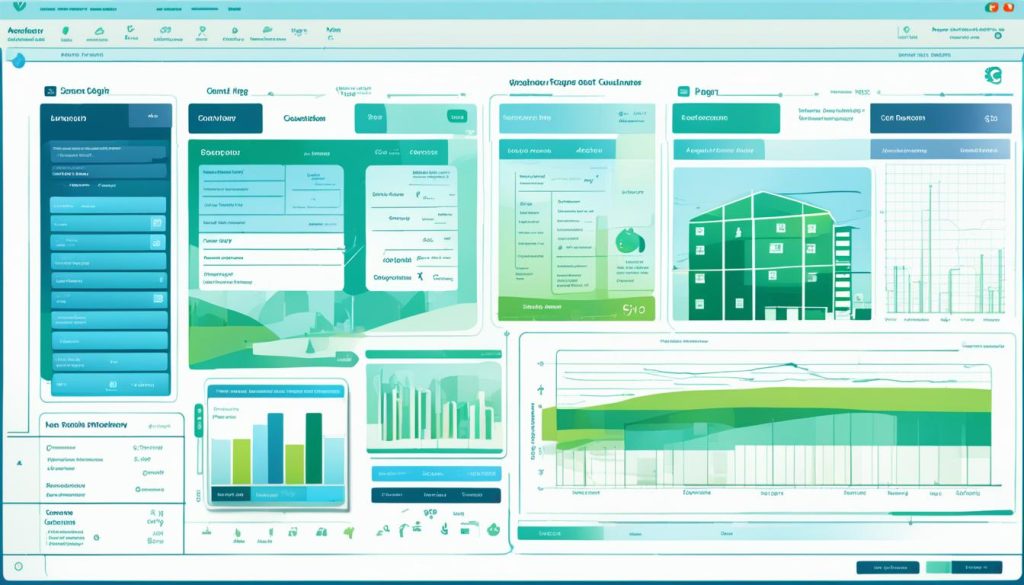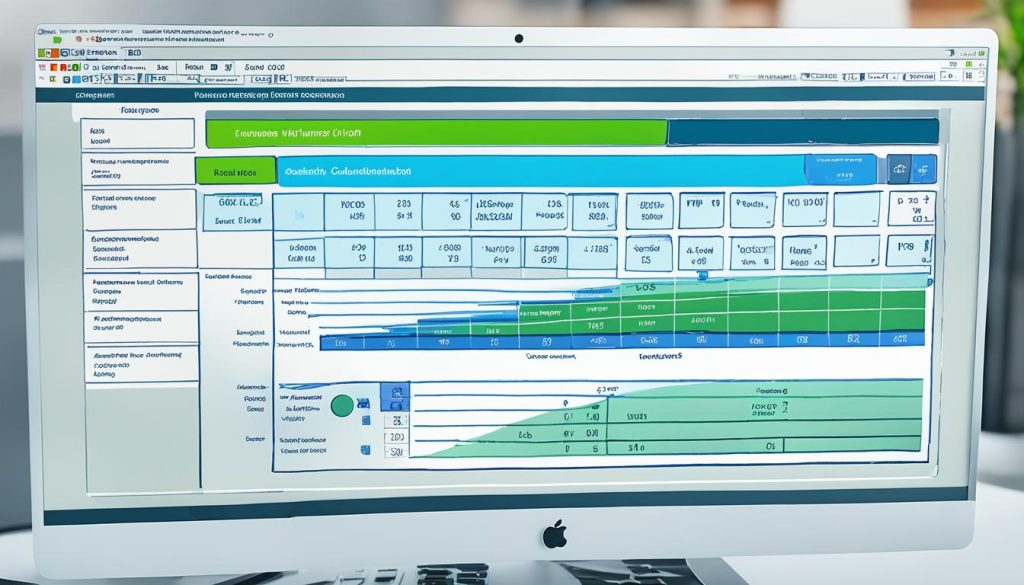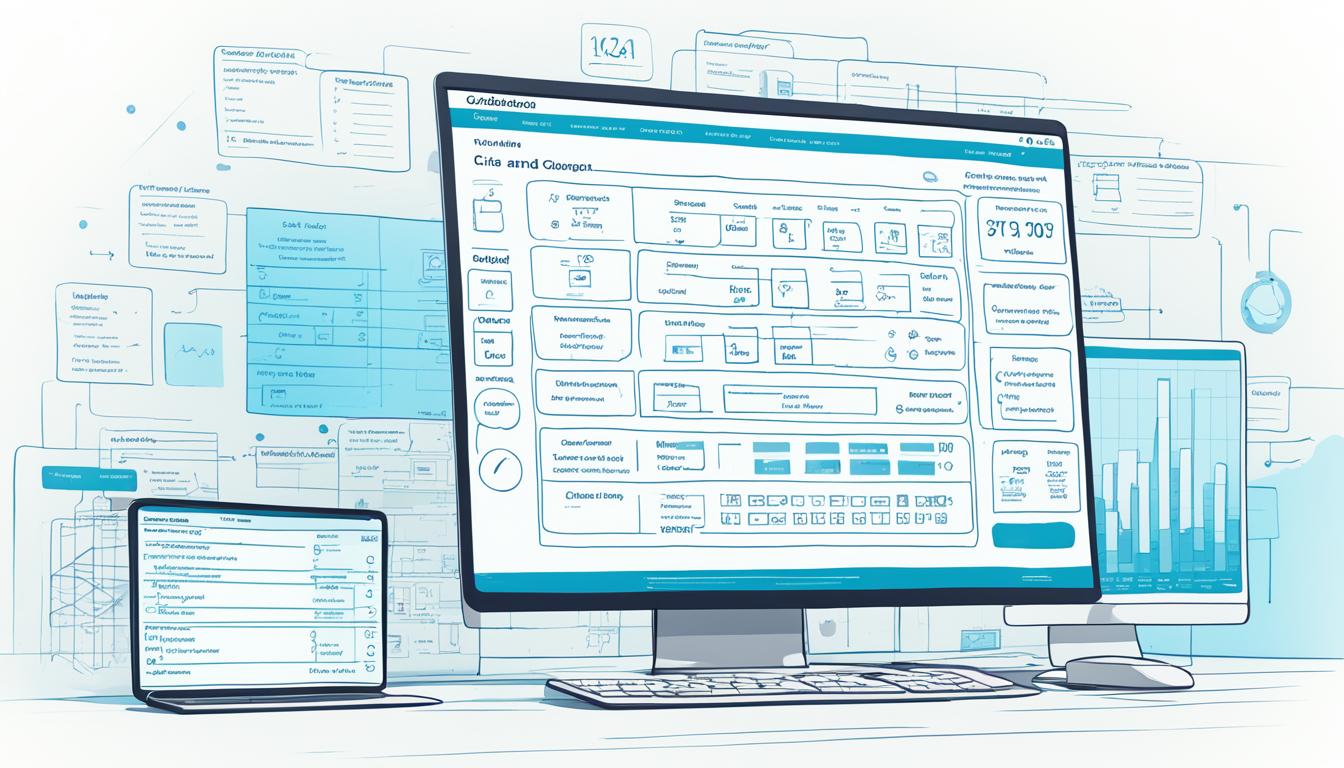You can use special software to get accurate HVAC load calculations. These tools help figure out the best HVAC system size for your building. This ensures your space stays comfortable and uses less energy.
Software for HVAC load calculations looks at many things like the climate, insulation, sun exposure, and how many people use the space. It gives you exact BTU or ton measurements for cooling and heating. Using these tools saves time and makes your calculations more accurate than doing it by hand.
The software also looks at important things like the building’s walls, how airtight it is, and the heat from extra devices. This gives you detailed results. It helps you avoid mistakes in picking the right HVAC size, making your systems work better and saving money on energy bills.
Learning to use HVAC load calculation software makes you better at designing and setting up efficient heating and cooling systems. This skill is very important for HVAC pros who want to offer the best service in the changing world of climate control technology.
Understanding HVAC Load Calculations
HVAC load calculations are key for the right size of heating and cooling systems in buildings. They help figure out the best equipment size for homes and businesses. Knowing the basics ensures your HVAC system works well and saves energy.
Definition and Importance
HVAC load calculations are math processes that check a building’s heating and cooling needs. They keep the space comfortable and save energy. Getting the size right avoids wasting energy and shortening the system’s life.
Factors Affecting HVAC Load
Many things affect HVAC load calculations:
- Building size and layout
- Insulation quality
- Number and size of windows
- Local climate conditions
- Occupancy patterns
- Heat-generating appliances
Manual vs. Software Calculations
Before, HVAC pros used manual methods like the Manual J calculation. Now, software gives quicker and more precise results. Let’s look at the differences:
| Aspect | Manual Calculations | Software Calculations |
|---|---|---|
| Time required | Hours to days | Minutes to hours |
| Accuracy | Prone to human error | High precision |
| Complexity handling | Limited | Can manage complex scenarios |
| Cost | Low initial cost | Higher upfront investment |
| Flexibility | Less adaptable | Easily adjustable for different scenarios |
Manual calculations are still useful, but software tools are now the norm. They’re more efficient and accurate for sizing HVAC systems for homes and businesses.
Benefits of Using HVAC Load Calculation Software
HVAC design software changes how experts handle heating and cooling load estimation. It uses advanced algorithms for a smoother HVAC planning process.
Accuracy is a big win. HVAC load calculation software cuts down on human mistakes. This means better cooling and heating load estimates. It leads to systems that are just the right size, use less energy, and make occupants more comfortable.
Time savings is another big plus. What used to take hours now takes just minutes. This lets HVAC pros work on more projects and serve clients faster.
- Increased accuracy in load calculations
- Significant time savings
- Improved energy efficiency
- Enhanced sales potential
- Seamless integration with other tools
Many HVAC design software options work with tools like Google Earth. This adds real-world data to calculations, making them more accurate. It includes things like local climate and building details.
| Feature | Benefit |
|---|---|
| Automated calculations | Reduces human error |
| Database integration | Improves accuracy with real-time data |
| Quick results | Increases productivity |
| Customizable reports | Enhances client communication |
With fast, dependable calculations, HVAC pros can give clients detailed, data-based proposals. This often means more sales and happier customers. It shows the software’s worth in the HVAC field.
Key Features of Effective HVAC Load Calculation Software
Choosing the right HVAC load calculation software is crucial. It can greatly improve your heating and cooling load calculations. Let’s look at the main features that make software stand out.
User-Friendly Interface
Great HVAC load calculation software has an easy-to-use interface. You’ll see menus that are simple to navigate and clear input fields. This makes it easy to enter data and get results fast, without needing to learn a lot.
Accuracy and Reliability
Getting precise results in HVAC load calculations is key. Top software uses advanced methods to ensure accuracy. It considers things like building materials, insulation, and local climate to give reliable estimates for heating and cooling loads.
Customization Options
Every building is different, and your software should be too. Look for tools that let you tailor inputs for various room types, occupancy levels, and equipment specs. This flexibility means your calculations will better match real-world situations.
Integration Capabilities
Good HVAC load calculation software works well with other tools you use. It has features like 3D CAD views and API integration to make your work easier. Some even let you work from anywhere on your mobile device.
| Feature | Benefit |
|---|---|
| 3D CAD Views | Visual representation of building layout |
| Automatic Surface Detection | Identifies unheated areas quickly |
| Industry Standard Compatibility | Aligns with ASHRAE, CSA, and ACCA Manual J |
| Mobile Access | Work on-the-go with smartphone or tablet |
By picking software with these key features, you’ll boost the accuracy and efficiency of your HVAC load calculations. This results in better system designs and more comfort for building occupants.
Perform Load Calculations Accurately with Software
HVAC load calculation software changes how we figure out heating and cooling needs. To get accurate BTU calculations, first, collect detailed info about the building. This includes climate data, insulation levels, window specs, and how often the building is used.
Then, put this info into your software. Many programs use Google Maps for precise location-based calculations. This makes the calculations more accurate by looking at local weather and sun exposure.

- Enter building dimensions and how it’s facing
- Specify what the building is made of and its insulation
- Input details about windows and doors
- Define how often the building is used and what’s in it
- Add info about lighting and appliances
Make sure all your inputs are correct. Some top tools can do calculations in less than five minutes. This is way faster than doing it by hand. It lets you quickly compare different scenarios to make your HVAC system better.
| Calculation Method | Time Required | Accuracy |
|---|---|---|
| Manual | 2-4 hours | Moderate |
| Software-assisted | 5-15 minutes | High |
Using software for HVAC load calculations makes the process smoother and more precise. This method ensures your system is the right size. It leads to using less energy and making buildings more comfortable.
Top HVAC Load Calculation Software Options
Choosing the right HVAC load calculation software is key to your design process. Let’s look at some top choices that make accurate calculations easy.
HeatCAD
HeatCAD comes in two versions: Professional and MJ8. It works with ASHRAE, CSA, and ACCA Manual J standards. This software meets different project needs and rules.
CoolCalc
CoolCalc is a mobile-friendly HVAC load calculator approved by ACCA. It’s unique for its support of third-party plugins. This makes it easy to work with other tools in your design process.
LoadCalc
For quick estimates, LoadCalc is perfect. It gives fast results using Manual J calculations. It’s great for early assessments or small projects where time is critical.
EDS HVAC
EDS HVAC is known for its speed and accuracy. It uses various data sources and complex algorithms. This software helps you make quick, informed decisions.
| Software | Key Features | Best For |
|---|---|---|
| HeatCAD | Multiple standards support, two editions | Versatile projects, regulatory compliance |
| CoolCalc | Mobile-friendly, third-party plugin support | On-the-go calculations, integrated workflows |
| LoadCalc | Quick estimates, Manual J based | Preliminary assessments, small projects |
| EDS HVAC | Fast calculations, complex algorithms | Precision-demanding projects, tight schedules |
Step-by-Step Guide to Using HVAC Load Calculation Software
Learning How to Perform Accurate HVAC Load Calculations Using Software is key for sizing residential HVAC systems. Here are the steps to follow for precise calculations:
- Select your climate region
- Input insulation grade
- Specify sun exposure
- Enter window and door details
- Provide air tightness information
- Account for glassed-in rooms and kitchens
- Input occupancy data
- Add extra device heat wattage
After you enter these details, the software will calculate the recommended equipment capacity in BTU or Tons. This makes sizing residential HVAC systems easier, ensuring comfort and saving energy.

Let’s go through each step to help you use HVAC load calculation software well:
| Step | Description | Impact on Calculation |
|---|---|---|
| Climate Region | Choose your specific location | Determines baseline temperature and humidity |
| Insulation Grade | Rate your building’s insulation quality | Affects heat loss/gain through walls and roof |
| Sun Exposure | Indicate directional sun exposure | Influences solar heat gain |
| Windows and Doors | Enter sizes, types, and quantities | Calculates heat transfer through openings |
| Air Tightness | Rate building’s air sealing | Determines infiltration load |
By following this guide, you’ll get better at doing accurate HVAC load calculations with software. This leads to better residential HVAC sizing and system performance.
Common Mistakes to Avoid in HVAC Load Calculations
Getting HVAC load calculations right is key to designing systems that work well. Errors can make the equipment too small or too big. Let’s look at some mistakes to dodge when using HVAC load calculation software for precise BTU calculations.
Overlooking Building Envelope Details
The building’s envelope is crucial for heat movement. Skipping over insulation, window types, or air leaks can mess up your calculations. Good HVAC load calculation software has fields for these details. This helps you consider every part of the building’s design.
Ignoring Climate Data
Climate greatly affects HVAC loads. Using old or general weather data can give wrong results. Top-notch HVAC load calculation software uses the latest climate data for your area. This makes sure your calculations match real-world conditions.
Miscalculating Occupancy and Equipment Heat Gain
Guessing wrong about how many people or devices will be in a space can make the system too weak. Guessing too high can waste energy. Getting the right BTU calculations means knowing how many people and devices will be there and how they use energy.
| Common Mistake | Impact | Solution |
|---|---|---|
| Overlooking envelope details | Inaccurate heat loss/gain estimates | Use software with detailed envelope input fields |
| Ignoring climate data | Unrealistic load calculations | Choose software with up-to-date climate databases |
| Miscalculating occupancy/equipment | Under or oversized HVAC systems | Input precise occupancy and equipment data |
Avoiding these mistakes and using strong HVAC load calculation software helps you get more accurate BTU calculations. This leads to more efficient HVAC systems.
Interpreting HVAC Load Calculation Results
After running your heating and cooling load calculation, it’s time to understand the numbers. The results show how much cooling and heating your space needs in BTU (British Thermal Units) or Tons. These figures help you pick the right HVAC equipment for your space.
For commercial HVAC sizing, focus on peak load times. Your software might show when your building needs the most cooling or heating. This helps you choose systems that can manage high-demand periods efficiently, without wasting energy when it’s not needed.
Many HVAC calculation tools provide visual reports. These can include charts or graphs that show heat gains from various sources like windows, equipment, or occupants. Use these visuals to find ways to improve energy efficiency. Maybe better insulation could reduce heat loss through walls, or updated windows could lessen solar gain.
Remember, it’s not just about picking the biggest unit. It’s about finding the right balance where your HVAC system meets comfort needs and saves energy. By understanding these calculations, you’re preparing for a well-designed, cost-effective HVAC solution.





0 Comments